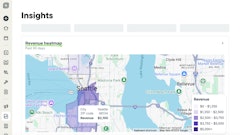
As in virtually every other field, technology is having a significant impact on the green industry – a trend that seems likely to only accelerate in the year ahead, particularly if an anticipated recession forces more businesses to work smart, while dealing with a contracted workforce and the pressure to reduce costs.
While technology is already widely used within the green industry to handle accounting and other basic business management functions, look for 2023 to usher in widespread use of field service management (FSM) software to increase efficiencies and improve customer service. Inventory management features contained in FSM software, for example, can help lawn, landscaping, and other green industry firms to completely automate the inventory management process, including material requirements, work order management, barcoding, manufacturer orders, and bills of materials.
Using FSM Software
FSM software can also help businesses to efficiently schedule, dispatch and assign jobs based on their size, scope, and worker availability. Calendars that cross-reference all team assignments to easily move workers from one job to another so there are no wasted service hours can be constructed, while task management can be used to set reminders, prioritize stops, track time and manage workloads. And because these features can be accessed and updated anywhere at any time, teams are focused exclusively on the hours needed to complete the job.
FSM software, though, is only the tip of the technology iceberg. While still in its infancy, artificial intelligence (AI) is beginning to make inroads within the green industry – a trend that will likely take off in the year ahead. Some lawn and landscaping companies, for example, are dealing with worker shortages or the need to reduce staff by turning to robotic lawnmowers. These battery-powered devices, which function much like a Roomba vacuum, are able to cut the grass quickly and efficiently, and then return to a charging station when their batteries run down. They do require some human intervention, though, because most models don’t allow property boundaries to be programmed into the control panel.
Tech of the Future
More advanced (and less dependent on a human assist) are tools such as an AI-driven sensor which can be programmed to alert lawn care companies when their customers’ lawns need service. When grass reaches a certain height, this pioneering device automatically alerts the provider then creates and can even send a customized job quote. The sensor can also be used to power in-ground sprinklers.
Another innovative AI device that is gaining acceptance among lawn care and pest control companies provides automated property measurements. Designed to streamline operations, the tool can be used to calculate exact square footage of lawns and driveways, as well as house perimeters, enabling companies to more accurately estimate cost and time considerations for each job.
These and other AI tools are transforming the way in which the green industry works. Simulating human intelligence, AI is able to automate the most repetitive and time-consuming aspects of the work while allowing companies to improve efficiency and increase productivity. Properly implemented, the right AI tool can automatically schedule and assign work to optimize company resources and reduce employee workload. It can also gather and analyze data in real-time in order to recommend a proper course of action and the equipment that will be needed to complete a specific job.
Look also for AI to play an increasingly important role in predictive maintenance in the coming year. From lawn care to irrigation and water-related issues, AI is being leveraged to collect data, remedy problems and improve service quality and customer satisfaction. All of this is also helping the green industry to better monetize the services being offered, while creating new revenue streams.
The Benefits of Tech
Improved service quality and customer satisfaction are at the heart of yet another trend that is expected to dominate in 2023, namely ensuring real-time connectivity between field workers and the home office. In addition to the traditional tools of the trade, more and more field workers are being equipped with customer-centric tools, such as mobile devices or tablets, which enable them to respond to consumer needs quickly and effectively. Some businesses are even employing video conferencing to consult with customers before dispatching workers to the location.
This trend, of course, is also impacting back-office operations, which increasingly are using electronic communications to send messages to customers and employees, schedule appointments, deliver invoices, and receive payments.
Given the increasing reliance on technology which will pervade the green industry in 2023, the question that remains for many companies is how to best leverage these innovations to market to current and prospective customers, and increase the number of younger, tech-savvy workers entering the profession?
And What about Online?
Starting on the consumer side, social media is providing an unparalleled means for work to be positively (or negatively) showcased via applications like Yelp, Foursquare and Angi. Businesses increasingly are posting the ratings provided by these apps, along with customer testimonials and photos of recently completed projects, on their own websites and social media channels. Websites are also being used to provide answers to frequently asked questions and how-to blogs or videos so that consumers can educate themselves. Photos and videos offer an opportunity to feature visual examples of the technology the green industry is now employing.
Marketing to younger individuals who potentially might consider careers in the green industry is a little trickier. To generate interest among students and other prospective workers, companies first have to get their attention. And the obvious way to do that is through social media, where tech savvy GenZers spend more than three hours each day on average. In 2023, look for more green industry firms to place brief, but informative, videos on apps such as TikTok to acquaint their potential future workforce with the wide range of sophisticated tech tools the industry now employs.
Bottom line: Technology is rapidly changing the green industry and 2023 will take see that evolution rise to unprecedented heights. The question that remains for companies in the industry is how they can best take advantage of both existing technology and innovations on the horizon to position themselves for a future in which rising customer demands, a shaky economy, and potential worker shortages seem likely to dominate.




















